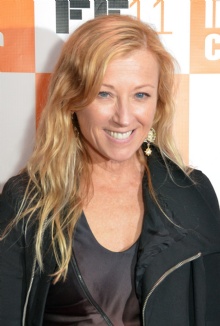Overview
Cindy Sherman's History Portraits (1989–90) rewires the visual grammar of Old Master painting by restaging its archetypes with herself as every sitter. Drawing on Renaissance and Baroque portraiture as well as 18th- and 19th-century salon conventions, the series mimics museum-canon images, Madonnas, nobles, scholars, allegories, only to reveal their constructedness through deliberate seams, prosthetics, and theatrical fakery. The photographs are all untitled, numbered, and in color, refusing the authority of named subjects or artists even as they echo them.
Context and Method
The series took shape during a period Sherman spent in Rome and later in New York, where she had access to costume houses, wigs, fabrics, and period props. Using herself as the lone model, she built each character through layers of artifice: wigs, painted backdrops, powdered skin, false noses, aging makeup, exaggerated décolletage, and conspicuously fake breasts or stomachs. Instead of erasing these devices, she leaves edges, straps, and mismatched textures visible, tipping the viewer from reverence to skepticism. Lighting and composition reference studio portrait conventions, soft frontal illumination, sculptural shadow, centered sitters, while color photography intensifies the tactile oddness of plastic flesh against velvet and lace.
Iconography and Sources
Many images nod to specific paintings without declaring themselves as copies. A half-draped beauty recalls Raphael’s La Fornarina; a steely heroine with a blade evokes Judith imagery; clerical finery conjures cardinals from Venetian and Spanish painting; maternal figures echo countless Madonnas. Yet Sherman’s faces, sometimes masculinized, often off-kilter, reject ideal proportion. Prosthetic features balloon or sag; hands look too rubbery; textiles feel too sumptuous for the body they adorn. The resulting pastiches sit between homage and send-up, a cabinet of near-masterpieces that never quite resolve into the originals they tease.
Themes and Interpretation
The series probes how power and desire are trafficked through portraiture. Western art’s promise of truth-of-character gives way to masquerade; gender presents as costume; sanctity and authority become matters of props and pose. By occupying roles historically authored and consumed by men, muse, saint, noble, scholar, Sherman breaks the circuit of the male gaze and reroutes it through parody, discomfort, and self-awareness. The grotesque is calculated: the too-bright rouge, the waxy breastplate, the uncanny eye line insist that beauty in the canon has always been a cultivated fiction. Questions of authenticity extend beyond gender to the aura of art history itself, what makes an image authoritative if its codes can be so easily assembled, exaggerated, and undermined?
Form and Style
Large chromogenic prints present a lush surface that intensifies the dissonance between painterly citation and photographic fact. Depth-of-field and frontal staging flatten bodies toward the plane like paintings, while the camera’s precision betrays every seam and stitch. The tension between smooth pastiche and abrasive detail becomes the engine of the pictures, a push-pull between seduction and exposure.
Reception and Legacy
History Portraits crystallized Sherman’s postmodern strategies for a broad audience and is often grouped with appropriation art of the era, yet it remains singular in its bodily comedy and psychological edge. The series has become a touchstone for debates about representation, the museum canon, and the performance of identity, showing how portrait traditions can be reanimated to critique the very ideals they helped entrench.
History Portraits
A series of elaborately staged color photographs referencing Old Master portraiture and historical painting conventions, in which Sherman reconstructs and destabilizes canonical images of women through costume, prosthetics and mise-en-scène.
Author: Cindy Sherman
 Cindy Sherman's biography and quotes, detailing her groundbreaking photography, artistic development, and influential exhibitions.
Cindy Sherman's biography and quotes, detailing her groundbreaking photography, artistic development, and influential exhibitions.
More about Cindy Sherman
 Cindy Sherman's biography and quotes, detailing her groundbreaking photography, artistic development, and influential exhibitions.
Cindy Sherman's biography and quotes, detailing her groundbreaking photography, artistic development, and influential exhibitions.